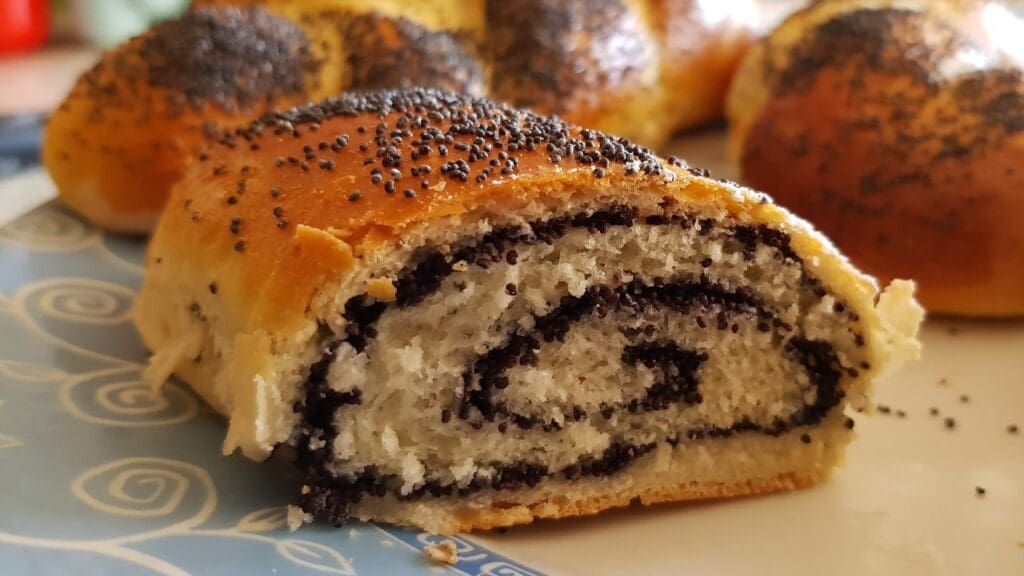Christmas is of course the celebration of the birth of Jesus Christ, or of love and family for non-Christians, but Yuletide is also the season of overeating, with plenty of yummy dishes and sweets prepared. Most households around the world bake special cookies during the holiday season, from evergreen shortbread to Santa-shaped cookies to mark the festive season. While gingerbread is an indispensable part of Hungarian Christmas as well, there is one ingredient to a truly joyful holiday that Hungarians cannot go without: the country’s all-favourite sweet pastry, the bejgli, or, according to the English spelling, beigli.
This delicious poppy seed or walnut cake roll is not an exclusively Hungarian dessert, but it is popular across Central Europe. While the poppy seed roll is known in the Balkans and in Russia as well, in Poland and Hungary it enjoys a much more widespread popularity than in any other countries.
The classical Christmas pastry arrived in Hungary from Silezia, a formerly German-speaking land. Albeit according to some sources bejgli is of Armenian origin, to Hungary the rolls definitely arrived through German and Austrian mediation.
A bejgli recipe’s first known mention is from a cookbook written by István Czifrai, dating back to the 1830s.
At that time one of the most popular fillings of the roll, poppy seeds, were already known by the Hungarian cuisine. Poppy seeds were first brought to the country centuries ago by the Ottoman Turks from Eurasia. After its first mention in Czifrai’s cookbook, bejgli soon conquered the hearts of Hungarians, becoming not only one of the most favourite sweets of the nation, but an indispensable part of the Christmas table as well.

Albeit traditionally either poppy seeds or walnuts are used to fill the pastry, nowadays new types of fillings are also widely used – such as chocolate and chestnuts. Consuming bejgli with the traditional fillings is a well preserved tradition in Hungary, as they are associated with some superstitious believes – eating poppy seeds is supposed to bring good fortune and money to the family, while eating walnut is supposed to keep ill forces away. Maidens in search of true love are eager consumers of the sweet rolls – it is believed that after consuming the yummy pastry young girls will easily find their future husbands in the coming year.
Due to its origin from German-speaking lands, Hungary adopted the Yiddish word ‘Beigl’ to describe the cake roll,
naming it bejgli. The Yiddish word originates from the German word ‘beugen’ that means ‘to bend’—Beigl was originally a horseshoe shaped pastry. In fact, the American ‘bagel’ also originates from the same word.
There is another famous Hungarian pastry often associated with bejgli, also normally filled with poppy seeds or walnuts, the so-called pozsonyi kifli, or Pressburger Roll. It is a crescent-shaped yeast bread roll. Although the connection between the two pastries is disputed, the pozsonyi kifli is also on the list of Hungarian Christmas favourites. According to a popular, yet unproved legend the pozsonyi kifli was designed by an unknown baker in today’s Bratislava as a small alternative to bejgli, specifically made for children.
Else than the pozsonyi kifli, another ‘relative’ of bejgli is flódni, a traditional Hungarian Jewish pastry. Flódni combines walnuts and poppy seeds—in addition to layers of shredded apples and plum jam. Bejgli’s relative, traditionally consumed during Hanukkah in the Hungarian Jewish community, almost disappeared from Hungary after the Holocaust, although some families did continue to bake it. Thanks to chef Rachel Raj, who made a name for herself with her expertise in flódni-baking, the Jewish delicacy was brought back to prominence in an extraordinary way—in 2012, 1,600 pieces of flódni were baked for the Sziget Fesztivál. If the flódnies had been put on each other, the flódni mounting would have been 96 metres high, just as tall as the Hungarian Parliament. Although this flódni’s record is truly outstanding, it is nothing compared to the record-keeping bejgli, which was 570 metres long. The astonishingly long roll was made in 2014 and was presented to the public in Kossuth Square outside the Parliament.
As preparation of the roll cake is rather time- and ingredient-consuming, it may take up as much as a whole day to prepare it. Now, bejgli is widely available in supermarkets as well as pastry shops across Hungary in the weeks before Christmas.
Those adventurous enough may try making their own bejgli: all they need to do is follow the instructions in the video below!
Bejgli – Traditional Hungarian Xmas Roll with the Chef of our Embassy
Zsolt Farkas, chef of the Hungarian Embassy in Stockholm presents his personal recipe for bejgli, a traditional Hungarian Christmas roll. We wish you a joyful preparations for Christmas! Try it out yourself! Recipe (in Hungarian): https://stockholm.mfa.gov.hu/page/bejgli-ahogy-a-nagykoevetseg-szakacsa-kesziti?fbclid=IwAR1JzqvSeeDkQi6pUxeEowwquM_7E4GjYEuXdqCFfS2kriKU7UnWL1JnV2M #Bejgli #Ungerskmat #Hungarianchristmasroll #Ungernsambassad








